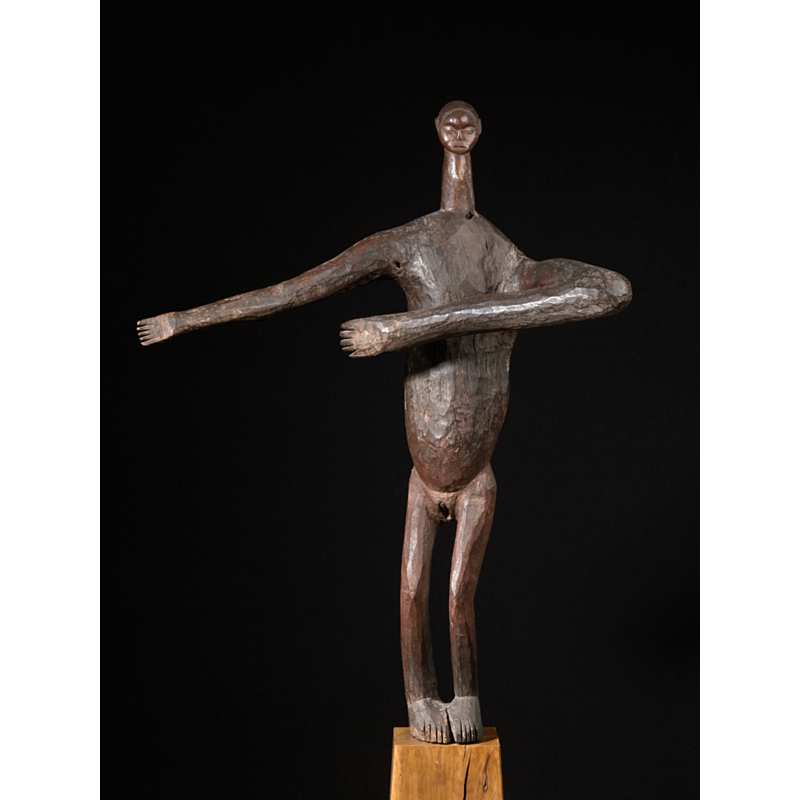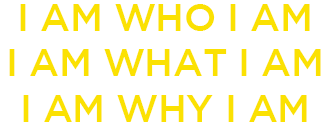
23 Oct Pindi, Democratic Republic of the Congo
This whimsical, unique, rare dancing figure is not an iconic example of African art but one that is both inventive and allegorical. (For additional images of this figure, click here.)
With its arms oversized and swaying and its legs bent, the figure is dancing. The arms are oversized as they would be in a slow shutter speed photo of a dancer in motion.
It is both male and female. But unlike hermaphrodite figures generally (which host breasts and a penis), this figure has a vagina, a male torso (no breasts) and an Adam’s apple. It is a man with female genitals, as in dancing celebrations in West Africa where males dress as females.
Unlike this dancing figure which is rare, the majority of tribal art figures are standing, not dancing, and host a head that is disproportionately large relative to torso. This figure has a tiny head and long neck separating the head and the torso. The message it conveys is that when we are dancing our experience is physical and our heads play a disproportionally smaller role in how we experience the world. A corollary is that when we are not physically engaged our experience is a function of our head.

